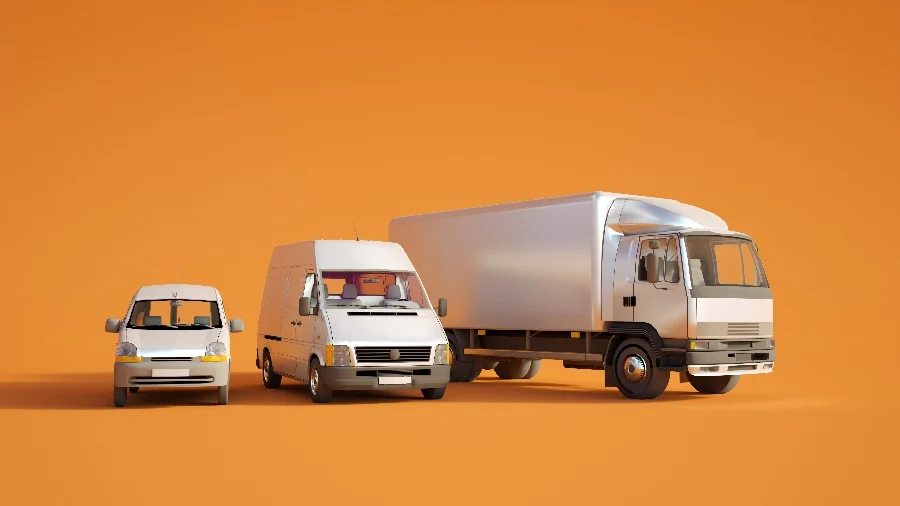How well does your fleet run? Are you continuously working to improve efficiency? Hopefully you’re already on a good rhythm, and if not, now is a great time to create a routine because optimizing your commercial vehicle fleet will save you money while simultaneously increasing your revenue.
Here are some tips to get your fleet functioning at its optimal potential.
1. Reduce vehicle downtime
All of your fleet vehicles are bound to have a breakdown at some point, but you can prevent many instances by being proactive. Here’s how the pros do it:
- Use fleet management software. The ideal software will tell you how many miles per day your vehicles have run along with part failure rates, which helps you understand the average age of replacement. When you know the average time a part will function before it fails, you can replace it before it becomes a problem.
- Utilize predictive maintenance. Use sensors to predict part failure and track data, like tire pressure, to prevent avoidable downtime. You’ll still need to send your vehicles in for repair, but it won’t cause unexpected downtime and disrupt your drivers en route.
- Perform scheduled maintenance. Regular maintenance is essential for any vehicle, so make sure you have your fleet scheduled for the appropriate maintenance as recommended by the manufacturer.
2. Use GPS tracking
Your drivers have their set routes, but what if they deviate without your knowledge? One time won’t make a difference, but if it’s a habit, that’s going to add up to plenty of wasted fuel. With GPS tracking, you’ll know where all of your drivers are at any given time. If they go off-route and it’s not approved, you can find out what’s going on and put a stop to it fast.
Most commercial GPS tracking devices will also tell you how many miles have been driven, time spent idle, and even more data. This is helpful for calculating gas mileage.
Another benefit is finding lost fleet vehicles. If one of your vehicles goes missing or doesn’t complete their route, you can use the GPS to locate it and make sure everything is okay.
GPS tracking can also be used to show customers where their driver is located in real time on a map. This allows customers to estimate delivery times more accurately than relying on a tracking number that only updates at specific points. If a customer knows the truck is nearby, they won’t take that quick trip to the store until later.
3. Optimize your routes
Planning your routes intentionally will reduce the amount of time and money you spend. Shorter, more efficient routes use less fuel and planning routes according to stops reduces backtracking and wasted time.
Route planning isn’t easy to do manually, and that’s why fleet managers use software. Just tell the system what your stops are, and it will calculate specific routes for each of your drivers accordingly. A good route planning system won’t create any overlaps and will assign stops efficiently. For instance, if you have five stops on one street, those stops will be assigned to the same driver.
Optimizing your routes is good for business, but it will also be appreciated by your drivers. They will appreciate having shorter routes and more efficient stops throughout their day.
4. Prioritize optimizing fuel economy
Fuel is likely your top cost, and it doesn’t matter if you’re using diesel or regular gas – it’s expensive. You might be surprised to see how much money you can save by optimizing your fuel economy. Here’s what you can do:
- Track fuel usage. You can’t optimize what you don’t measure. Tracking fuel usage will tell you if a vehicle is using more fuel than expected, which could be caused by the driver or the vehicle’s age.
- Discourage aggressive driving. Driving fast, passing cars, and using four-wheel-drive tanks fuel economy in addition to creating a safety hazard. Encourage your divers to ease up on accelerating, brake smother, follow the speed limit, and use cruise control on the highway. Research shows this can improve fuel efficiency up to 20%.
- Use fuel rewards cards. These programs may not be worth it to individuals, but for businesses, they’re essential. Shop around for a fuel rewards program that meets your needs and get an account. Most of them are worth the effort, and some are better than others. It just depends on how much fuel you use and where your fleets operate.
An optimized fleet generates more profit
Avoid costly downtime and lost revenue by optimizing your fleet’s performance. When your fleet is operating at its best, you’ll save money and see an increase in revenue, and that’s worth the effort.


